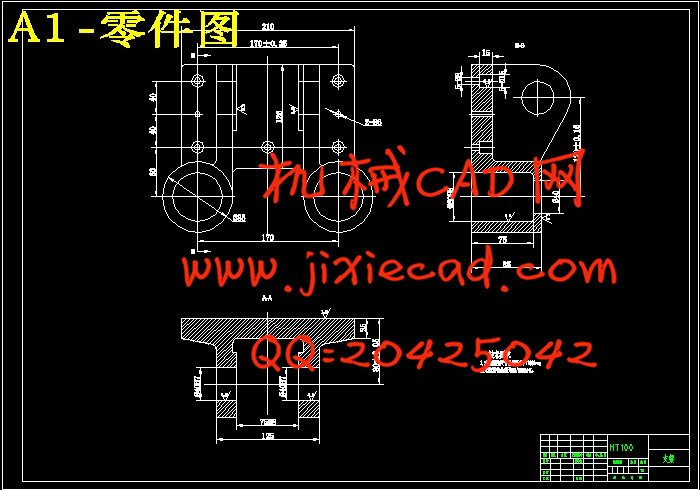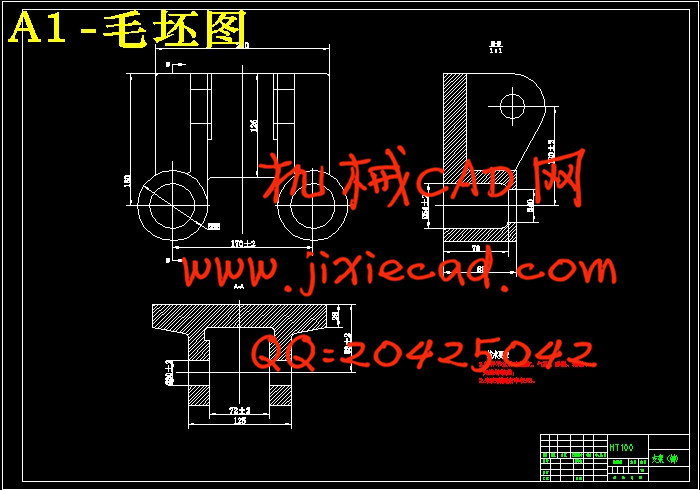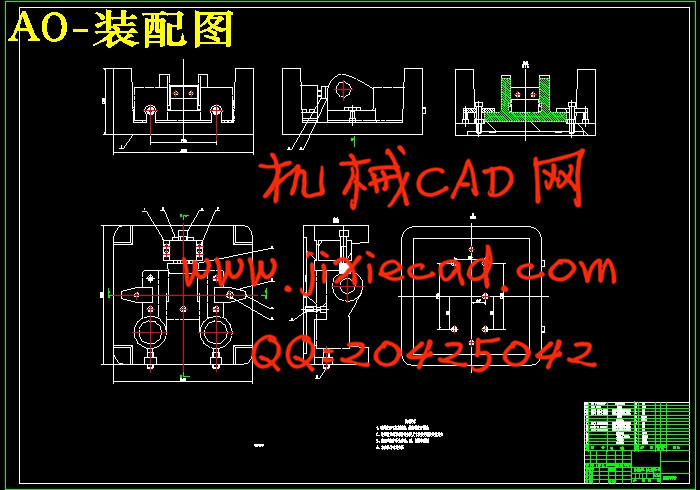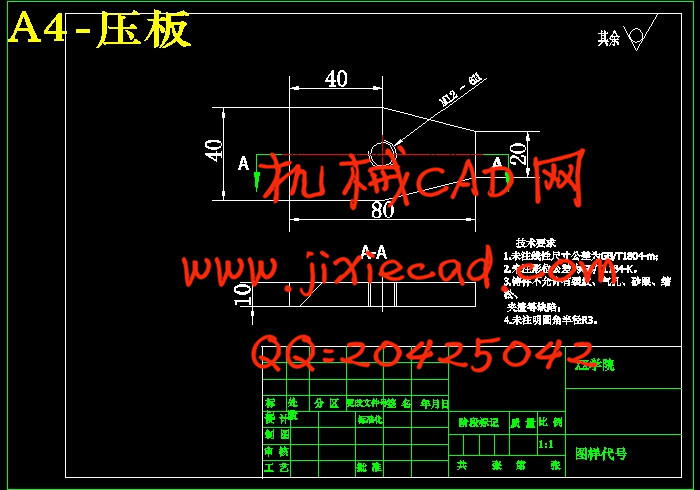设计简介
摘 要
基于在支架的前提下,为了满足加工精度的需要而设计2套夹具。组合夹具属于柔性夹具,柔性夹具是以组合夹具为基础的能适用于不同的机床、不同的产品或同一产品不同规格型号的机床夹具。柔性夹具元件具有较好的互换性和较高的精度及耐磨性,可根据不同机床和不同零件的加工要求,选用配套中的部分元件组装成所需要的夹具。首先要分析加工零件的工艺以及技术要求,运用柔性夹具设计的基本原理和方法,拟定夹具设计方案以达到对支架进行合理的安装、定位、夹紧的目的。在完成夹具草图以后,进一步考虑元件之间的连接关系和固定方式,设计合理的结构实现各零部件间的相对运动。关键词:支架,加工工艺,加工方法,工艺文件,夹具
Abstract
Based on the premise of the support, in order to meet the needs of the processing accuracy and design 2 sets of fixture. The modular fixture belongs to the flexible fixture, the flexible fixture is based on the combination of fixture can be applied to different machine tools, different products or the same product different specifications of the machine tool fixture. Flexible fixture component has a better exchange and high precision and good wear resistance, according to the processing requirements of different machines and different parts, the choice of matching parts of assembled into the fixture. First analyze the machining technology and technical requirements, the use of the basic principles and methods of flexible fixture design, fixture design scheme proposed in order to achieve the purpose of reasonable installation, positioning and clamping bracket. After the completion of the fixture sketch, the connection between the components and the fixed way is further considered, and the reasonable structure is designed to realize the relative movement between the parts..Keywords: bracket, machining process, machining method, process file, fixture
目 录
摘 要 3Abstract 4
目 录 5
第1章 绪 论 7
1.1 夹具的组成 7
1.2 常用定位元件及选用 8
1.2.1工件以平面定位 8
1.2.2工件以外圆柱定位 8
1.2.3工件以内孔定位 8
1.2.4对定位元件的基本要求 9
1.2.5常用定位元件所能限制的自由度 9
1.3 夹具设计目的与意义 9
1.4 专用夹具设计的国内外现状 10
1.4.1 国内专用技术应用及现状 10
1.4.2 专用工艺在国外的发展状况 11
1.5 专用夹具设计的发展趋势 12
第2章 零件的分析 14
2.1支架的结构及其工艺性分析 14
2.2支架的技术要求分析 15
2.3 毛坯的选择 16
第3章 支架机械加工工艺路线的制定 17
3.1定位基准的选择 17
3.2 拟定工艺路线 17
3.3 加工余量和工序尺寸的拟定 19
3.4 切削用量的确定 21
第4章 钻床夹具的设计 29
4.1设计要求 29
4.2夹具设计 29
4.2.1 定位基准的选择 29
4.2.2 切削力及夹紧力的计算 29
4.3定位误差的分析 30
4.4夹具设计及操作的简要说明 31
总结 35
参考文献 36
致谢 37







